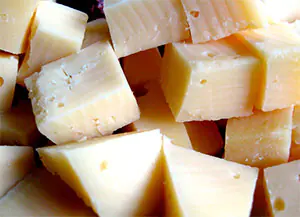In this article, our dear readers, we offer you a simplified classification of cheeses for your consideration. As you probably know: there are a huge number of varieties of this high-protein product in the world. However, all these types of cheeses can be divided into three main types. Let's look at what these types are and give each of them a detailed description:
So, the above three types of cheese. This:
- Solid;
- Soft;
- Home.
Now let's look at all these types in more detail. The production of all types of hard cheese is carried out on the basis of cottage cheese, which must be separated from the whey, washed and necessarily squeezed. Next, the resulting cheese mass is necessarily pressed in a certain amount, as a result of which a particular taste is acquired. Within a month you can get hard cheese. At the same time, you can eat it immediately, but remember that it can be tastier if you keep it longer. Over time, the taste of the cheese becomes sharper. And the density of its structure directly depends on the severity of the load applied during pressing. And one more thing: whole milk makes the best hard cheese.
In principle, the process of producing soft cheese is similar. The only difference is the pressing time of the cheese mass. It should be much shorter. This type of cheese does not need to be coated with paraffin and rests under weight for 0 to 8 days. In principle, all types of soft cheeses can and should even be consumed immediately after they are ready or in the coming days. The storage period of such cheese, alas, is much shorter than that of the hard type, due to the higher liquid content. But you can prepare them not only from whole milk, but also from skim milk.
Homemade cheese can be classified as a soft type, which is prepared from separated cottage cheese with a large amount of water. It cannot be stored for long periods of time. This is the easiest cheese to prepare. Commercially it is usually made from skim milk, but there is also a chance of making it from whole milk.
Post Views: 74


